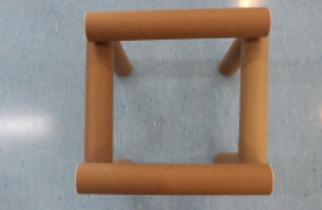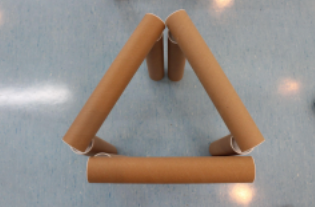How To Learn and Explore Shapes at Home, Nursery, and Pre-School
- Jul 7, 2021
- 4 min read
Within the EYFS (Early Years Foundation Stage) there is an area of learning and development known as ‘Mathematics: Shape, space and measure’ that every child should learn. This article will provide advice on how to create your own shapes out of common materials found around the house, so you can increase involvement and discovery at home. Furthermore, EYFS has an area entitled 'Expressive arts and design: Exploring and using media and materials' which these activities will definitely support!
For more information, you can search ‘Development Matters In The Early Years Foundation Stage’ or check out these PDF provided by the Department of Education: https://assets.publishing.service.gov.uk/government/uploads/system/uploads/attachment_data/file/988004/Development_Matters.pdf
Additionally, feel free to ask your nursery about their EYFS Framework used, and carry out these basic learning activities at home with your children to further develop their learning, while having fun at the same time! Ducklings also provides a ton of free resources and activities to try at home, which can be found here: https://www.ducklingspreschool.co.uk/activities
So let's get into exploring shapes at home
- Paper towel and toilet paper rolls, with tape. Like in the photos below, save up your paper rolls and experiment with making shapes at home today! To construct your own 3D triangle shape you can create this by building up large cylinder cardboard tubes. This is a simple activity in which children can engage in themselves or/and with the help of an adult showing them how to create the triangle shape if they do not already know how to. If older they could create this themselves. You might be able to find these cylinder cardboard tubes from something you have bought to then use for this junk modelling construction activity or/and you may be able to find other large cardboard tubes from items such as an empty wrapping paper roll, smaller cardboard toilet rolls at home and just placing these together to create this shape.
You could ask the children “what shape have you created?” You could ask “how many sides does this shape have?”
Arts activities can be combines with learning about what you can find in the outdoors such as from forest school or just simply at home in a garden or on a walk. Items that children can find and pick up from the outdoors can be identified. You can ask them what they have found, what colour it is, look up the type of item and its name in a book to refer to and stick down these items onto art paper in detailed artwork arrangements and then they have already learnt what it means to create their own outdoor artwork and what can be found in the world and the environment around them in which they live, play and go to nursery in.
- Materials found around the house and garden, a piece of paper, and tape. Like in the photos below, gather items around your house and garden. These activities will support the EYFS 'Understanding the World'.
Arts activities can be combines with learning about what you can find in the outdoors such as from forest school or just simply at home in a garden or on a walk. Items that children can find and pick up from the outdoors can be identified. You can ask them what they have found, what colour it is, look up the type of item and its name in a book to refer to and stick down these items onto art paper in detailed artwork arrangements and then they have already learnt what it means to create their own outdoor artwork and what can be found in the world and the environment around them in which they live, play and go to nursery in.
If you would like to create one of these detailed, artistic, floral and garden outdoor artwork arrangements please read further. This can simply be created by finding various outdoor items in your own back garden or even out on a walk by a forest. You might find different types of leaves, flower heads, twigs etc and then all you need to do is glue and stick them down using a craft glue such as this one called ‘HI-TACK ALL PURPOSE VERY STICKY GLUE’ which can be found and bought or ordered from art shops such as Hobby Craft.
Or if you cannot buy this type of glue another simple alternative option that would be more child friendly would be to get a plastic cup, a plastic glue spreader, some plain flour and some warm water and just simply pour a bit of the plain flour into your plastic cup, add some warm water and stir and mix this up with your glue spreader until it's made a thick but smooth paste ready to act as glue which you can then spread straight onto your paper or onto the back of your outdoor items which you have found to stick them down onto the paper where you want them. If you want to create artwork such as this you can arrange and group together the same colour and type of outdoor items you have found into small clusters on your art paper page and stick them down together, then continue to do this same process with the same group items until eventually you have filled your whole page and have also created a much larger detailed, artistic, floral and garden outdoor artwork arrangement. This activity, in particular, would be better suited to pre-school and holiday club children who may even come to the nursery to carry out activities in forest school or for these age groups to carry out at home or/and with families, friends.












Comments